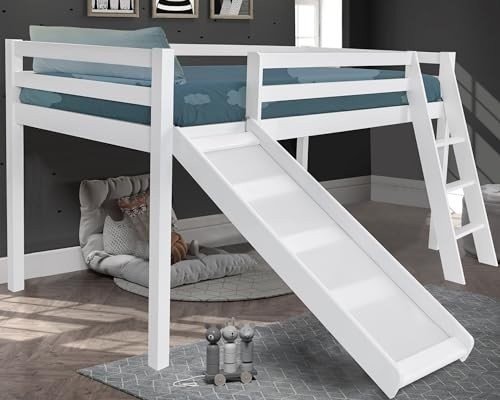A Trip Back In Time How People Talked About Kids Bunkbed 20 Years Ago
Title: The Ultimate Guide to Kids Bunk Beds
Introduction
As children grow, so does their requirement for area and storage solutions. Bunk beds are an excellent method to take full advantage of space while providing a fun and practical sleeping plan for your kids. This thorough guide will explore the various types, benefits, security considerations, and FAQs related to kids bunk beds.
I. Types of Kids Bunk Beds
- Requirement Bunk Beds: These are the most typical type, featuring two twin-sized beds stacked on top of each other.
- Futon Bunk Beds: The bottom bunk is changed with a futon, supplying a sofa and a bed in one piece of furnishings.
- Twin-Over-Full Bunk Beds: The bottom bunk is bigger, accommodating a full-sized mattress, while the leading bunk is a twin.
- L-Shaped Bunk Beds: These consist of two beds put perpendicularly, providing more flooring area underneath.
- Loft Bunk Beds: A single bed is put on a raised platform, leaving room for a desk, play area, or storage underneath.
II. Advantages of Kids Bunk Beds
- Space-Saving: Bunk beds are perfect for smaller sized bed rooms, releasing up floor area for other activities and furniture.
- Fun and Exciting: Children frequently delight in the novelty and adventure of climbing up to their own private sleeping location.
- Cost-Effective: Purchasing one bunk bed is more budget friendly than buying 2 separate beds.
- Versatile: Many bunk beds can be separated into 2 separate beds as children grow older or when space enables.
- Built-In Storage: Some bunk beds feature built-in storage services, such as drawers, desks, or racks.
III. Safety Considerations
- Durable Construction: Ensure the bunk bed is made from tough, resilient products and has a safe and secure ladder for safe access.
- Correct Spacing: Gaps in between the mattress and the frame should be less than 3.5 inches to prevent entrapment.
- Proper Height: Select a bunk bed with a proper height for your child, considering their age, size, and capability to go up and down securely.
- Secure Mattresses: Use the right size mattress and secure it to the bed frame to prevent it from moving during sleep.
- Guardrails: Ensure guardrails are set up on both sides of the leading bunk and are at least 5 inches higher than the top of the mattress.
IV. FAQs
- What is the ideal age for a child to sleep on the leading bunk?It is normally recommended to wait up until a child is at least six years of ages before permitting them to sleep on the leading bunk.
- Can bunk beds be separated into two separate beds?Yes, some bunk beds can be taken apart and transformed into 2 different beds.
- Just how much space is required between the bottom of the top bunk and the top of the bottom bunk?A minimum of 2 feet 8 inches is recommended for head clearance on the bottom bunk.
- Are bunk beds safe for children?When properly put together and utilized, best place to buy bunk beds near me are safe for children. Constantly follow security standards and guarantee your child comprehends the rules for utilizing the bunk bed.
V. Conclusion
Kids bunk beds are a useful and enjoyable solution for making the most of area and offering a special sleeping experience for your children. By thinking about the numerous types, advantages, and security factors to consider, you can make a notified decision when choosing the ideal bunk bed for your household.
